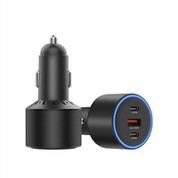
A HUB Is A Common And Essential Networking Device in The Field Of Computer Networks
It serves as a central connection point that allows multiple devices to be interconnected within a local area network (LAN).
- Product Introduction
The basic function of a HUB is to receive data packets from one device and then broadcast those packets to all other devices connected to it. For example, in an office environment, a HUB can connect computers, printers, and other network-enabled devices. When a computer sends a file to be printed, the data first goes to the HUB. The HUB then forwards this data to all the connected devices. However, this broadcasting nature has both advantages and disadvantages. On one hand, it simplifies the connection process as devices do not need to have a specific one-to-one connection setup. On the other hand, it can lead to network congestion and security risks since all devices receive all the data, and an unauthorized device could potentially intercept sensitive information.
There are different types of HUBs. Passive HUBs simply receive and retransmit signals without any amplification or signal regeneration. They are the most basic and inexpensive type but are limited in their range and performance. Active HUBs, on the other hand, have the ability to amplify and clean up the signals before retransmitting them. This allows for longer cable lengths and better signal quality, making them more suitable for larger networks or networks with longer cable runs. Intelligent HUBs are a more advanced version. They possess additional features such as network management capabilities. They can monitor network traffic, detect errors, and even provide some level of security features like access control. For instance, an intelligent HUB can be configured to allow only specific devices to connect to the network based on their MAC addresses.
In terms of network topology, HUBs are often used in a star topology. In a star topology, each device is connected directly to the HUB. This topology offers several benefits. It is relatively easy to install and troubleshoot. If one device fails or has a cable issue, it usually does not affect the other devices' connections to the network. However, the reliance on the HUB means that if the HUB itself fails, the entire network segment connected to it may experience an outage.
Over time, with the development of networking technology, switches have become more popular than traditional HUBs. Switches operate in a more intelligent way, only forwarding data packets to the specific device that the data is intended for, rather than broadcasting to all devices like a HUB. This significantly reduces network congestion and improves network performance. Nevertheless, HUBs still have their place in some simple and low-cost networking scenarios, especially in small home networks or for educational purposes where basic connectivity is the main requirement and budget is limited.
In conclusion, a HUB is a fundamental networking device that has played an important role in the history of local area networking. Although it has some limitations compared to more advanced networking equipment like switches, it remains a viable option in certain situations due to its simplicity and cost-effectiveness.
Hot Tags: a hub is a common and essential networking device in the field of computer networks, China a hub is a common and essential networking device in the field of computer networks manufacturers, suppliers, factory









